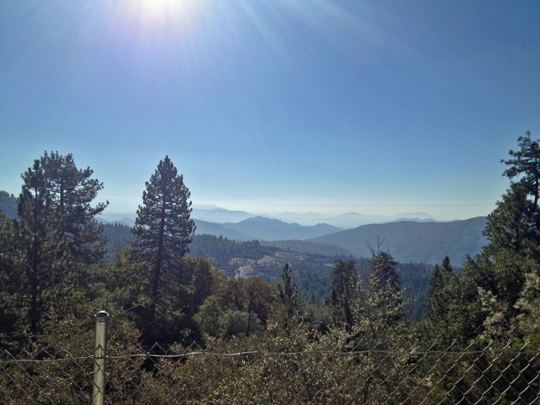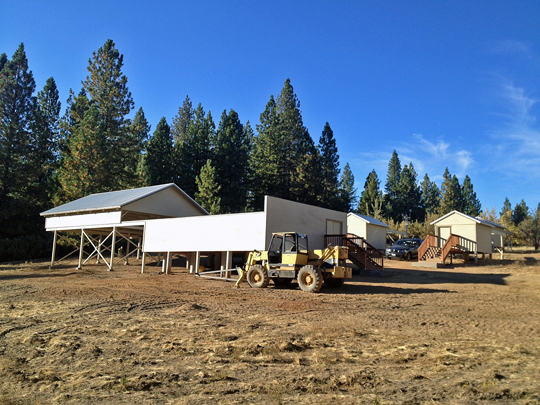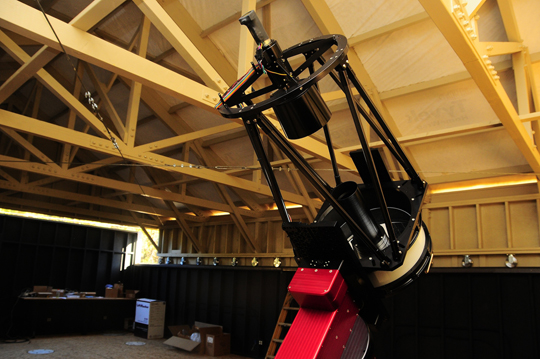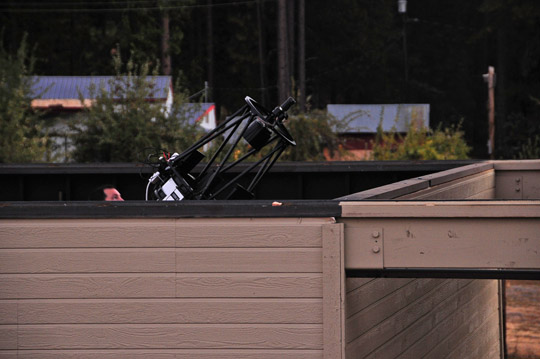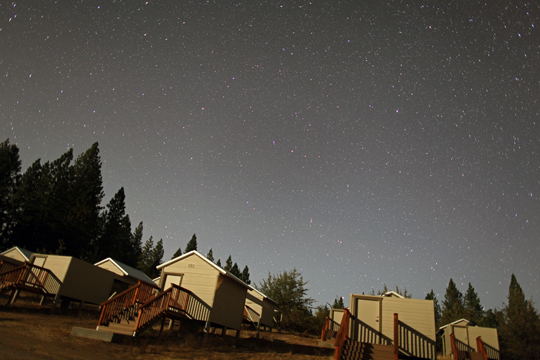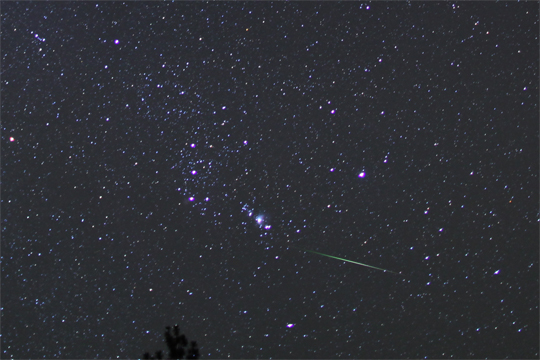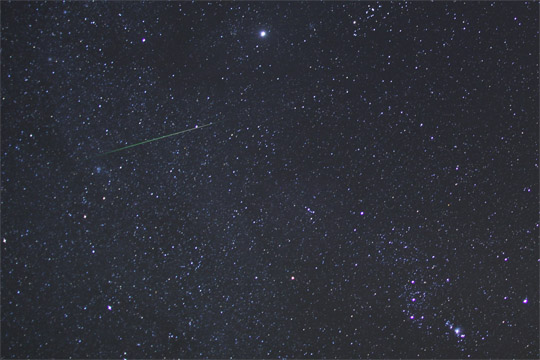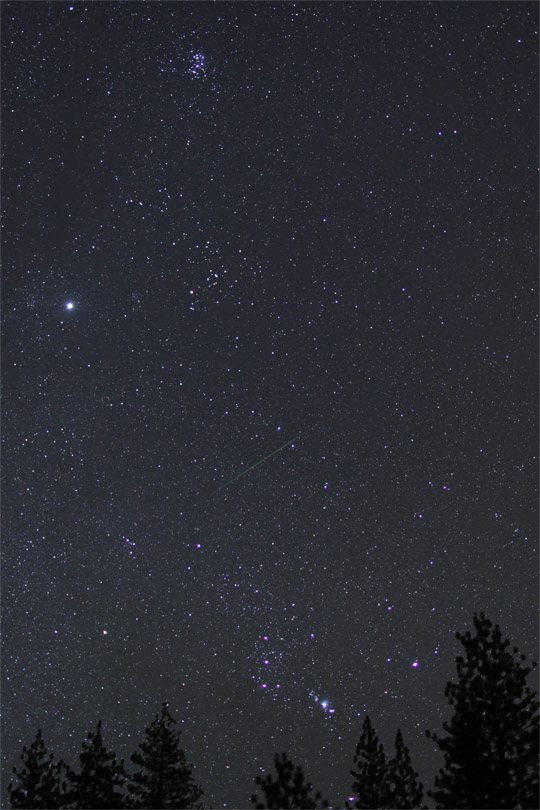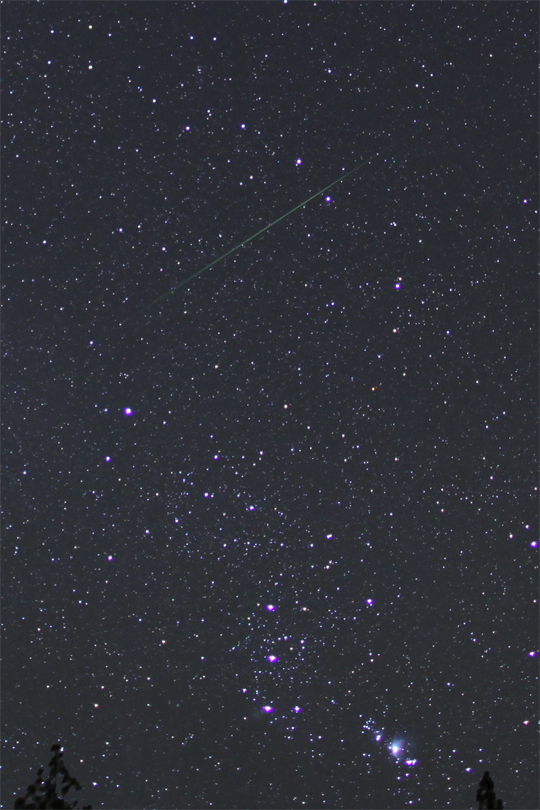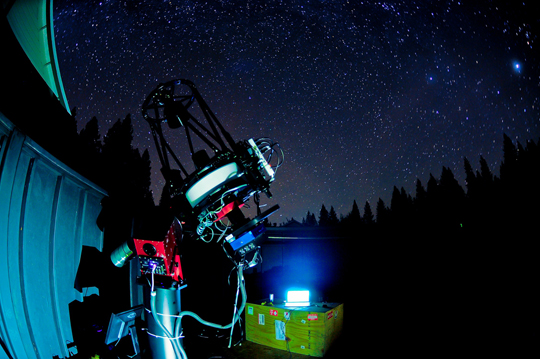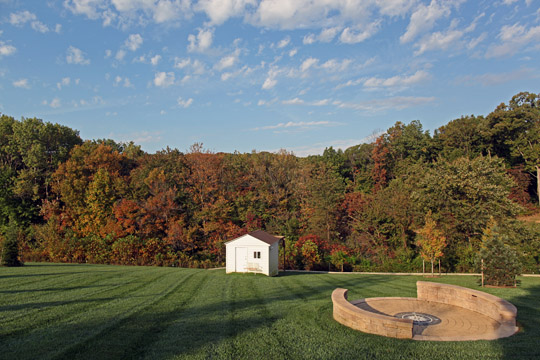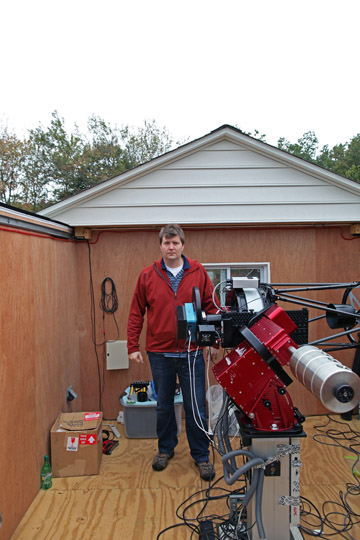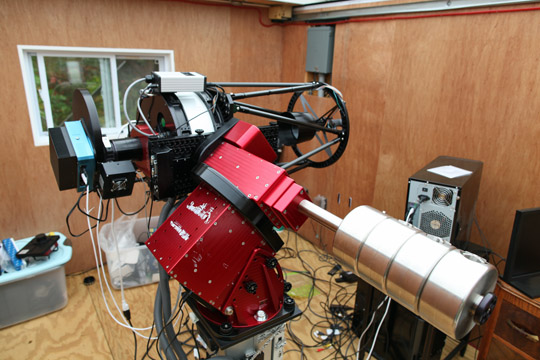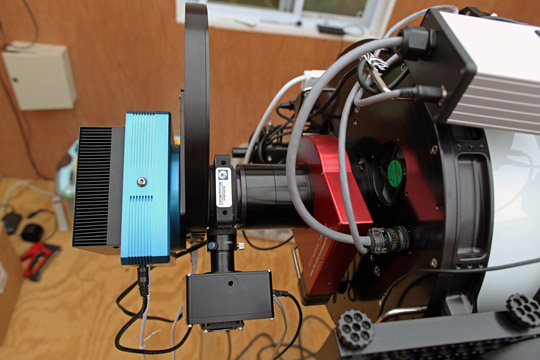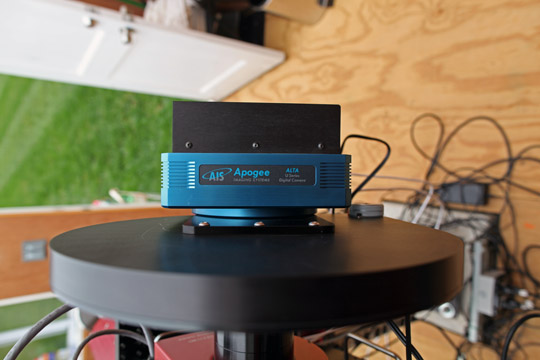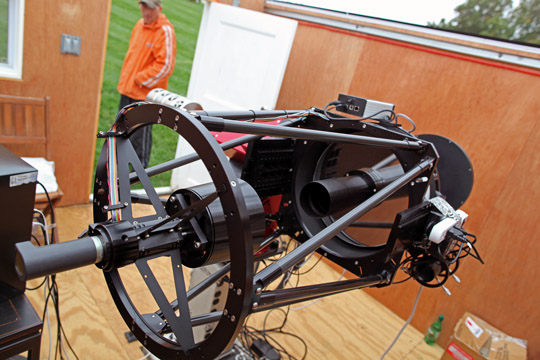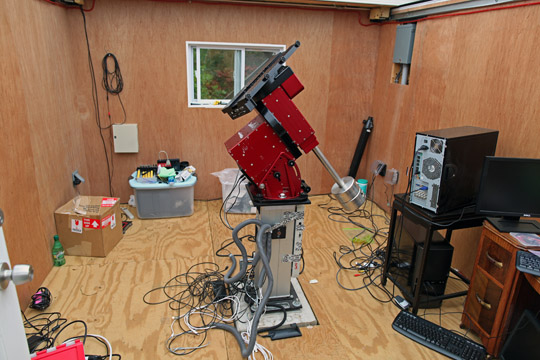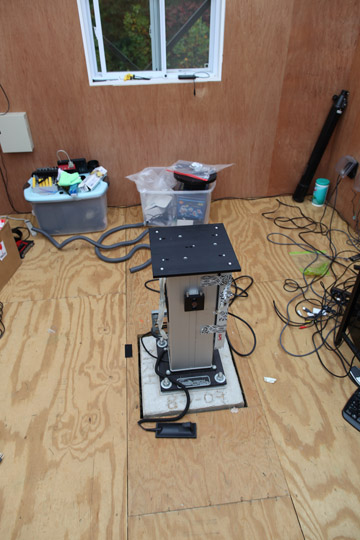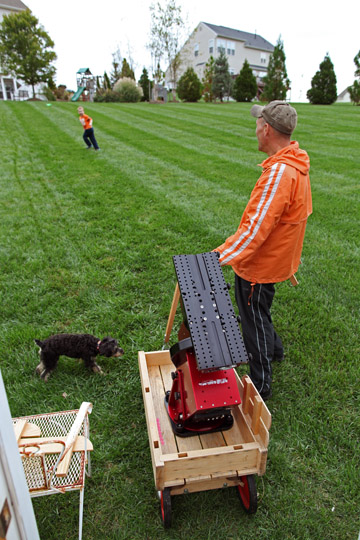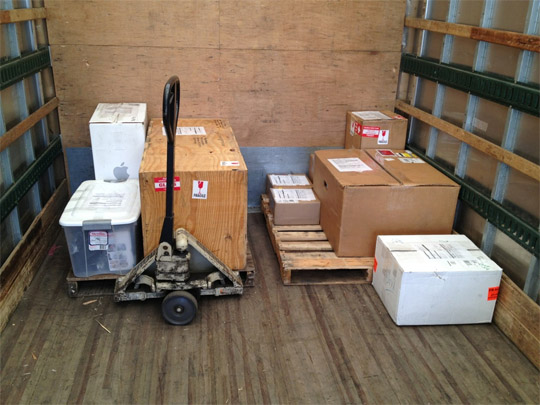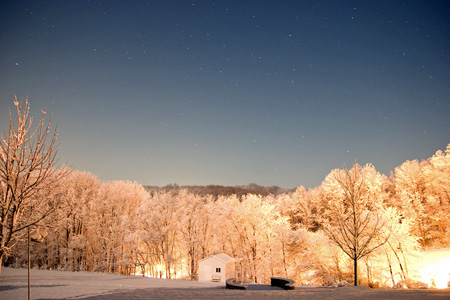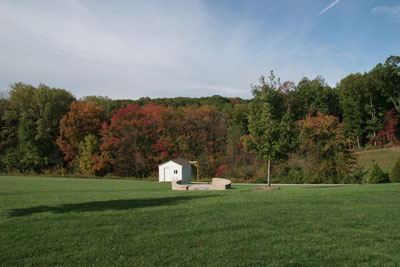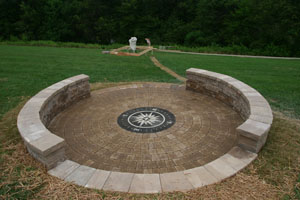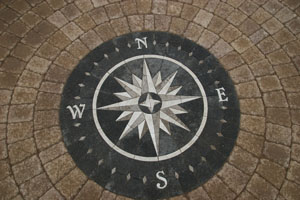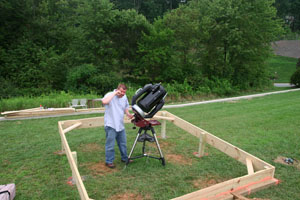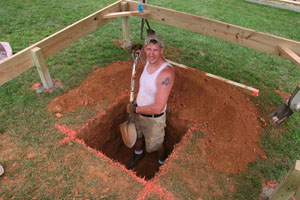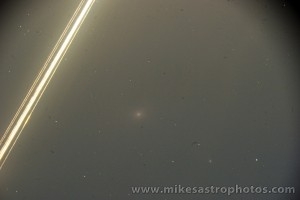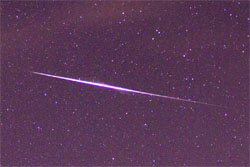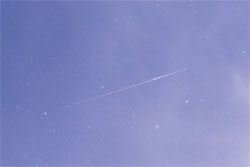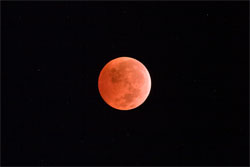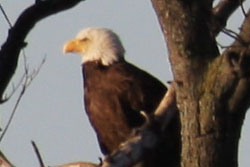Observatory
SRO Update – Mission Accomplished
by Mike Hankey, under Observatory
I flew out to Fresno CA this past Thursday night with the goal of getting my telescope equipment that I had shipped out the week before and setting it up at Sierra Remote Observatories (SRO). The day I flew out, a news story broke about a massive meteorite producing fireball that happened off the coast of California and was thought to have dropped meteorites west of San Francisco. This was certainly a sign that my mission was Universe approved!
I picked up my gear (515 lbs) at a warehouse in Fresno Friday morning, packed my rented SUV chock-a-block full without a space to spare and then drove up the mountains to the Observatory inside the Sierra National Forest. Here’s a picture of the view near SRO.
The site is literally amazing — better than Disney World. There are about a dozen single station roll-offs all lined up next to each other in two rows and then one massive roll-off, quite possibly the largest roll off observatory in the world. This would be my telescope’s new home. The building is big enough to house 10-12 scopes and an amazing feet of creativity and engineering skills. I was literally blown away by what these guys had created here.
My first day started around 8:00 am, I had a hard time finding the warehouse thanks to apple maps, but ended up finding it by 10:00 am (I had to use my brain). I was at the site by 12 and then spent the next 7-8 hours unpacking and physically setting up all of the equipment. I had everything mounted by 8pm, but had not connected any of the computer or software. I so wanted to stay the night tinkering and observing but I was literally exhausted. I would handle this phase much better after a night of rest, so we had dinner and then called it a night.
The next morning I left my rented cabin in Shaver Lake and drove back to the observatory. I spent the day setting up the computer cables, software, debugging problems, tying down the scope and camera wires, testing all of the movement and rotations so that wires wouldn’t get tangled up, collimating the scope and that kind of stuff. I had this all about done by 4:00 PM and then drove into town to grab some food and warmer clothes. It was the peak of the Orionid meteor shower and it would also be my first light on the scope at its new home and I would be staying up all night long!
I planned to do my polar alignment, final collimation and other software setups and then hopefully spend the rest of the night imaging. I ended up spending most of the night collimating and didn’t get through everything I needed to. I jumped back and forth between telescope tweaking and photographing the meteor shower. This was a really cool place to do some wide field astrophotography.
I was so busy with the scope setup, I barely had time to observe the shower and only saw a few meteors. In addition a storm was coming in and the humidity levels were up, causing my camera to fog up. I was only able to get a few meteor photos, but I’m really happy with them considering the level of attention they received.
Here’s a nice long Orionid Meteor from the 2012 peak.
Another positive sign from the Universe and my favorite picture of the night was this shot of a meteor right inside Orion’s bow. How cool is that!? For those who don’t know, Orion was the hunter and carried a bow (or in some interpretations a shield), this meteor looks like one of Orion’s arrows right before it is shot.
Here’s a zoomed in crop of just the Orion arrow meteor.
I tinkered with the scope until dawn, but still had more work to do before it would be ready for imaging. I worked on it through the day on Sunday but wouldn’t you know it clouds rolled in Sunday night and I couldn’t finish everything off. That’s ok though, now that I’m back I should be able to get the rest of the work done and be imaging in a week or so.
I left California Monday morning and headed to Tucson to pick up my slice of Lunar Meteorite, but that is another story.
Telescope is on the move
by Mike Hankey, under Observatory
I first contacted Greg Morgan at Sierra Remote Observatories in November 2010. SRO is a telescope park nestled in the Sierra Nevada Mountains an hour east of Fresno, CA. The park is very similar to a data center in the computer world — its a secure location, providing power and internet connections at a super dark high elevation location. The mountains are above the smog layer of the atmosphere and block most of the clouds coming in from the Pacific leading to 280 clear nights per year. When I first contacted them they didn’t have any openings, but were just starting the process of building a new observatory building that would house 20+ telescopes. I put down a deposit and signed the lease and started building out the rig in my backyard. Over the next two years the guys at SRO walked me through the process and help me out immensely with learning the ropes of robotic astrophotography. I would ultimately control the telescope remotely via the internet from across the country, but this was quite an overwhelming project when first starting out. The observatory building process took longer than expected, but I put the time to good use and I really needed it. It literally took me all of this time to get all of the equipment and learn how to set it up and use it properly. I had finally gotten to the point where everything was working perfectly just a few weeks ago. They just finished the observatory in California and I had to tear down my astro-rig and ship it 2000 miles across the country. It shipped out yesterday on a freight truck. I will fly out to California next weekend and if all goes well I will be setting everything up next Friday and Saturday night during the peak of the Orionid Meteor Shower!
Here’s a picture of my observatory in Freeland, Maryland. I love the fall colors this time of year.
Here’s a picture of me with my scope right before we tore it down. I’m literally about ready to cry.
This is an amazing bunch of hardware.
The imaging train starts with a 360 degree rotator and field flattener, some extension tubes, an Astrodon MMOAG (Monster Manual Off Axis Guider), an SBIG 402 guide camera, a 10 position color filter wheel and then the Apogee U16M full format CCD camera.
The Apogee CCD camera is super cooled with a huge CCD chip!
Front view of RCOS with 14.5″ primary mirror.
Paramount ME German Equatorial Mount looking sad and lonely without the scope.
And finally all that was left behind…
We wheeled the Paramount up the hill and into the garage.
Packed everything up and put it on the truck yesterday. Note I do not use an apple computer for controlling the observatory telescope, i just had the box lying around and used it to pack my PC.
First Snow
by Mike Hankey, under Observatory
We had our first snow of the season. It snowed all day and then everything cleared up for a nice evening. I setup the camera on the tripod and shot the skies over my observatory for a few hours hoping to get a meteor. I saw two that streaked the sky right behind the observatory as my camera was shooting, but they were too faint to get picked up. The 3/4 moon and all of the reflective snow don’t make nice conditions for meteor viewing.
Observatory Construction Complete
by Mike Hankey, under Observatory
We finished the construction on the observatory about 6 weeks ago. I have been waiting for the pier for the last month. I was late getting the pier order into pier tech, I did not realize the had to fabricate it / build to order. I got shipping confirmation on Monday so the pier should be here any day now. Once that is installed I’ll be at 100% and ready to start taking nice astro photos again. I haven’t been able to photograph without the pier as there is too much vibration with the tripod on the wooden floor. Almost there, I can’t wait!
More Observatory Construction Photos
by Mike Hankey, under Observatory
Here are some more constructions photos of the observatory. These were from a few weeks ago.
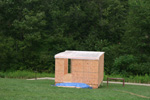 |
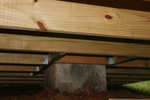 |
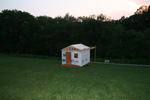 |
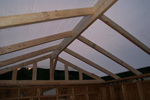 |
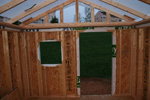 |
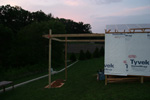 |
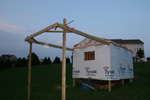 |
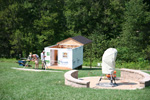 |
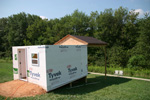 |
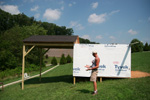 |
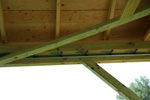 |
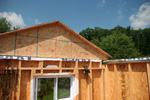 |
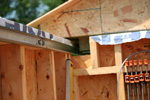 |
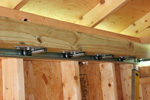 |
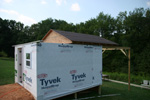 |
Here is a video of the roll off roof in action (this was taken the day we got the roof working).
Observatory Pier Construction
by Mike Hankey, under Observatory
The pier as it is called is the center piece and one could argue most important part of an observatory. The pier is what the telescope rests on and a stable platform is critical when you want to take astro photos. I put a lot of time into researching and thinking about the type of pier I wanted to use and I ended up going with pier tech. This pier is a square metal column that is mounted to a plate set in concrete on or above the ground. Our concrete pillar ended up using 3000 pounds of concrete and was a pear shaped block at its widest point 3×3 and narrowest 2×2. The pier is two feet off ground level and is buried three feet under ground.
Another element of pier placement and development planning is the true north issue. Telescopes need to be mounted in a specific way so that they are pointed exactly true north. True north and magnetic north are different, so using a compass is unreliable. I wanted the structure of the observatory itself to be set to true north, meaning the east and west walls point exactly north and south. The building itself is a compass pointing at true north. The frame for the pier was set in the center of the structure and its walls are parallel with the buildings walls. To determine true north markings I used a variety of methods including: using a compass and offsetting for magnetic north (not recommended), using a sun dial at solar noon, using a telescope / the stars with drift alignment (and then marking the ground based on wedge location) and using a GPS. When all was said and done we got it right. For those of you who want to know the best way to find true north, I would recommend using a good hikers GPS (or iPhone compass) to figure it out.
Here are some pics of the pier construction. These are from a few weeks ago, the observatory is nearly completed, I will post more pics of the construction soon.
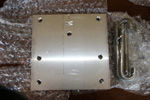 |
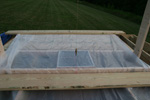 |
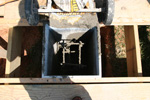 |
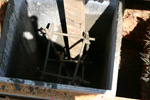 |
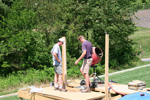 |
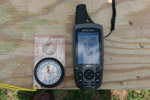 |
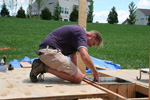 |
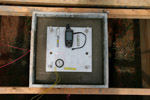 |
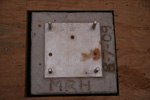 |
Construction of The Hankey Space Center started
by Mike Hankey, under Mason Dixon Meteor, Observatory
I started planning construction of an observatory a week after I got my first telescope. I quickly learned that the 4 hours it took to setup and tear down my 11-inch SCT was a real drag on observing. My first few months as an astronomer I spent more time setting up and tearing down than I did star gazing. Not to mention the fact that I have about 150 lbs of gear.
My wife and I were simultaneously planning a new patio construction so I bundled the observatory in with that project, spent about 3 months planning and had everything ready to go. The start date for the project was July 6th, 2009. For the patio and stone work we went with Edge Landscapes out of Hartford County. They did an amazing job. In addition to the patio under our deck, I wanted to put in an observation area so that I would have a place to hang out and do casual viewing and tripod photography while the scope inside the observatory was busy shooting pictures.
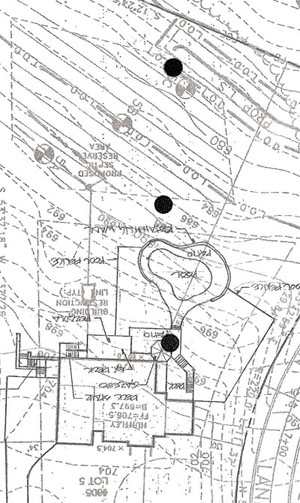
Orion's Belt Yard Plan
We had already put in a big Gazebo on the deck next to the house, so I wanted the observation deck centered in the backyard and the observatory tucked away next to the propery line. The gazebo, the observation deck and the observatory would make three points and I decided it would be cool if they modeled Orion’s belt. That way when the aliens flew over, they would be like “look at that guy, he knows what he’s doing.” I had a plat of my backyard and a lot of engineering documents the landscape architect had given us, so I scanned these into the computer and found a picture of Orion. I resized the Orion picture to be in scale with my backyard and then I played with the design in photoshop over a few days and several hours. I finally had it setup perfect. I then spent another few hours measuring the distance and surveying the yard to mark the spots as best I could.
My wife really didn’t like the Orion’s belt idea, she thought it was stupid to plan your backyard landscaping around a constellation. She thought the design compromised utility in favor of quirkiness. I personally struggled with the decision and changed my mind back and forth 5 or 6 times. Ultimately I felt an overwhelming desire, a gut feeling, a need that the observatory and observation deck stayed true to the Orion’s Belt plan. My wife said I was crazy, but reluctantly agreed. When I told Travis our landscaper about my plan, I really think he thought I was crazy but I could also tell he thought the idea was kinda cool. Before construction began I setup my scope at the exact location where the star Alnitak would be. I put in a lot of time to get this position just right and once I had it figured out it felt perfect.
Travis started working the day I took the Mason Dixon Meteor photo and finished up about three weeks ago. Once he finished with the patio work I had another team of carpenters, Ivy and Gordan come in and start construction on the observatory. I bought plans for a roll off roof observatory from skyshed.com . The plans these guys have are incredible and only $50. I had Ivy and Gordan dig the hole for the pier exactly where my scope was the night I took the picture. Ivy and Gordan are still working on the observatory, but we are close to completion. We poured the concrete for the pier last week (3000lbs) and they just finished putting up the walls today. The sad thing is, I had contracted all this work before the picture and now I realize I have already hit my peak as an astro photographer ;). I’ve only used my scope 1-2 times since I got hit in the head by this meteor and I’ve passed up some great dark nights outside to instead sit in front of the computer and pour over Google Earth, trajectory data and eye witness reports. I really want to find this damn meteor so I can get back to astronomy.
The weird thing about all of this is the compulsion I felt to make Orion’s Belt in my backyard was so strong I couldn’t even understand it, but I did it anyway. It overwellingly felt like the right thing to do. I really believe that if I had picked any other place in my backyard to place my telescope I would not have taken the Mason Dixon Meteor picture. The same compulsion I felt to make Orion’s Belt, I feel in regard to finding this meteor. I can’t explain it, I don’t know why I’m doing this, I have much better things to do with my time, but for some reason it just feels like the right thing to do. It feels like the amazingly right thing to do.
About two weeks ago I bought a hikers GPS to help me with work in the field. The first thing I wanted to do with it was get an exact reading of where my telescope was the night I took the picture. I took the GPS out to my scope location for the first practical application (I hadn’t moved my scope since the picture was taken (over 30 days at this point)).
The GPS coordinates on this GPS are represented as decimal numbers for the longitude and latitude. I was surprised when I looked at the coordinates nearly 30 days after I had taken the original photo. The last 3 digits of the longitude were 777. I asked Rob Matson what cooridinates he was using and his were the same as mine. Steve Arnold had used a GPS on my scope while he was out at my house, but I hadn’t noticed. Steve’s longitude reading also ended with 777.
